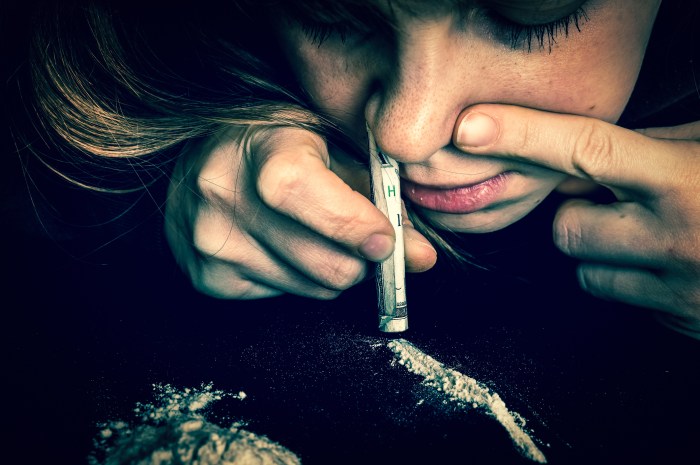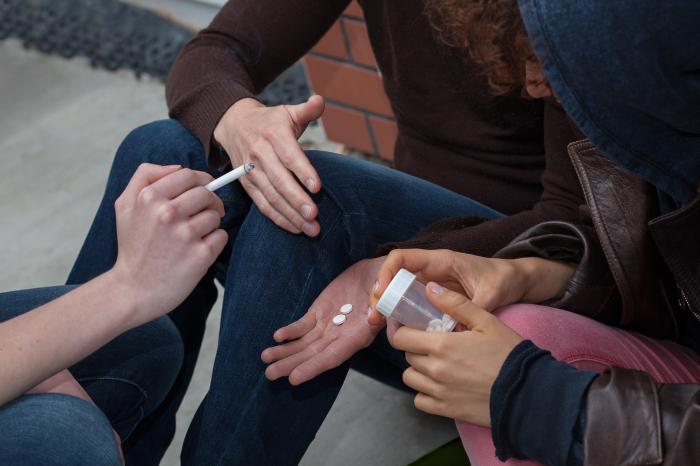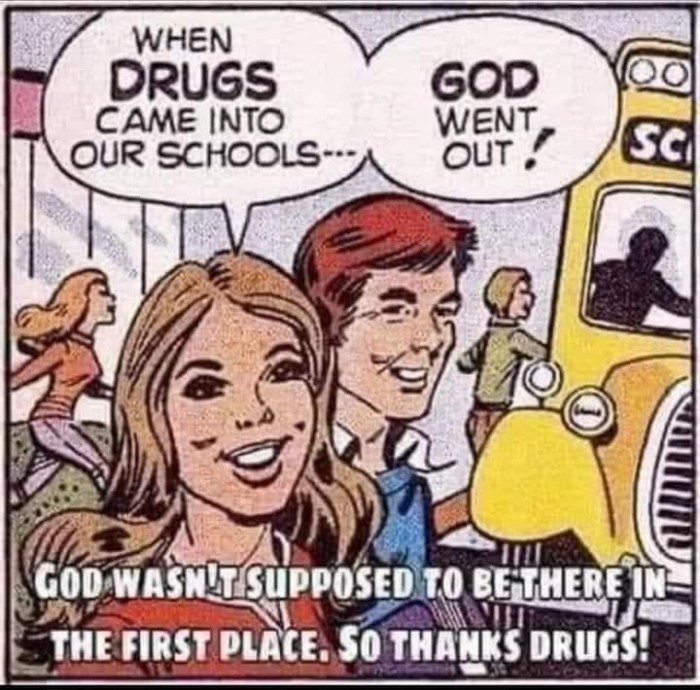Straight Blank Not into Drugs embarks on an enlightening journey, unraveling the intricate tapestry of drug use through the lens of culture, personal experiences, and the pursuit of well-being. Join us as we delve into the factors that shape our attitudes towards drugs, explore alternative coping mechanisms, and empower communities to create a supportive environment that fosters drug prevention.
This captivating narrative weaves together a rich tapestry of perspectives, from the societal norms that influence our perceptions to the personal beliefs and experiences that shape our choices. We’ll delve into the potential health risks associated with drug use, examining its physical, mental, and social consequences.
Cultural Perspective

Drug use has been a prevalent aspect of human societies for centuries, with its cultural significance varying across different regions and time periods. The perceptions, attitudes, and norms surrounding drug use are shaped by a complex interplay of cultural, historical, social, and economic factors.
Historical and Current Perceptions
Historically, drug use has been both celebrated and condemned in different cultures. In some ancient civilizations, certain drugs were used in religious rituals or as medicinal substances. However, as societies evolved, attitudes towards drug use became more restrictive, particularly with the rise of organized religions and the emergence of modern medicine.
In the 20th century, drug use underwent significant changes, with the development of new synthetic drugs and the rise of recreational drug use. This led to a shift in societal perceptions, with drug use becoming more stigmatized and associated with negative consequences.
Influence of Social and Economic Factors
Social and economic factors play a significant role in shaping drug use patterns. Poverty, unemployment, and lack of education can increase the risk of drug use, as individuals may turn to drugs as a coping mechanism or as a way to escape their circumstances.
Cultural norms and values also influence drug use. In cultures where drug use is seen as acceptable or even encouraged, individuals are more likely to engage in drug use. Conversely, in cultures where drug use is highly stigmatized, individuals are less likely to use drugs.
Cultural Diversity and Drug Use
The cultural diversity of the world results in a wide range of attitudes and practices surrounding drug use. In some cultures, drug use is deeply ingrained in traditional practices, while in others, it is strictly prohibited.
It is important to recognize and respect cultural differences in perceptions of drug use. By understanding the cultural context, we can better tailor drug prevention and treatment programs to the specific needs of different populations.
Individual Factors
Individual factors play a significant role in shaping attitudes and behaviors towards drug use. These factors include personal beliefs, values, experiences, and psychological and emotional characteristics.
Personal Beliefs and Values
Personal beliefs and values strongly influence an individual’s stance on drug use. Beliefs about the harmfulness or morality of drug use can lead to negative attitudes and reduced likelihood of use. Similarly, values such as self-control, health, and social responsibility can motivate individuals to abstain from drugs.
Experiences
Personal experiences with drug use or exposure to others’ experiences can also shape attitudes. Positive experiences with drugs may lead to increased acceptance or even use, while negative experiences can create aversion and reinforce negative beliefs.
Psychological and Emotional Factors
Psychological and emotional factors, such as stress, anxiety, and depression, can increase the risk of drug use. Individuals may use drugs as a coping mechanism to manage negative emotions or self-medicate mental health conditions.
Family and Peer Influences
Family and peer influences are crucial in shaping drug use behavior. Family members who use drugs or hold positive attitudes towards drug use can increase the likelihood of an individual’s involvement with drugs. Similarly, peer pressure and the desire to conform to group norms can influence drug use decisions.
Health and Wellness

Drug use can have detrimental effects on an individual’s physical, mental, and social well-being. Understanding the potential health risks associated with drug use is crucial for making informed decisions about drug use and avoiding its negative consequences.
Physically, drug use can lead to a range of health issues, including organ damage, cardiovascular problems, respiratory complications, and an increased risk of infectious diseases. Mentally, drug use can impair cognitive function, alter mood and behavior, and lead to mental health disorders such as anxiety, depression, and psychosis.
Socially, drug use can disrupt relationships, lead to isolation, and negatively impact employment and educational opportunities.
Resources and Support Systems
If you are concerned about your own or someone else’s drug use, there are resources and support systems available to help. These include:
- Addiction treatment programs: These programs provide a range of services, including detoxification, counseling, and support groups, to help individuals overcome drug addiction.
- Community health centers: These centers offer a variety of health services, including drug screening, counseling, and referrals to treatment programs.
- Peer support groups: These groups provide a safe and supportive environment for individuals to share their experiences and learn from others who have overcome drug addiction.
- Online resources: There are a number of online resources available that provide information about drug use, treatment options, and support groups.
Seeking help for drug use is a sign of strength and courage. It is never too late to get help and take steps towards a healthier and more fulfilling life.
Alternative Coping Mechanisms

Individuals who are prone to drug use often lack healthy coping mechanisms to deal with stress, anxiety, and other challenges. This section provides an overview of alternative coping mechanisms that can promote well-being and reduce the likelihood of substance use.
Engaging in these alternative coping mechanisms can provide numerous benefits, including improved mental health, increased resilience, and enhanced overall well-being. By developing and practicing these healthy strategies, individuals can effectively manage stress and adversity without resorting to harmful substances.
Relaxation Techniques
Relaxation techniques are effective in reducing stress and promoting a sense of calm. These techniques include:
- Deep breathing exercises
- Yoga
- Meditation
- Tai chi
- Progressive muscle relaxation
These techniques help regulate the nervous system, reduce muscle tension, and promote a state of relaxation.
Exercise
Regular exercise is not only beneficial for physical health but also for mental well-being. Exercise releases endorphins, which have mood-boosting effects. It also helps reduce stress, anxiety, and depression.
Straight blank, not into drugs, but I can appreciate a good monologue. Like that one from “Crimes of the Heart” here . It’s a powerful reminder of the strength and resilience of the human spirit, even in the face of adversity.
And it’s a great example of how theater can be a force for good, sparking conversations and challenging our perspectives.
Mindfulness Practices, Straight blank not into drugs
Mindfulness practices involve paying attention to the present moment without judgment. This can be done through meditation, yoga, or simply taking time to observe your thoughts and feelings without reacting to them. Mindfulness helps reduce stress, increase self-awareness, and promote emotional regulation.
Social Support Networks
Having a strong social support network is crucial for overall well-being. Talking to friends, family, or a therapist can provide emotional support, validation, and a sense of belonging. Social support can help reduce stress, improve mood, and increase resilience.
Education and Awareness: Straight Blank Not Into Drugs

Educating individuals about the dangers of drug use is crucial for preventing addiction and promoting health and well-being. Effective strategies include:
- Age-appropriate drug education programs:These programs tailor content to the developmental stage and cognitive abilities of the target audience.
- Evidence-based drug education programs:These programs are grounded in scientific research and have been shown to be effective in reducing drug use.
- Involving parents and caregivers:Engaging parents and caregivers in drug education efforts can reinforce messages and provide support to young people.
- Using multiple channels:Employing a variety of channels, such as schools, media, and community organizations, can reach a wider audience and increase the impact of drug education efforts.
- Promoting peer-to-peer education:Encouraging young people to educate their peers about the dangers of drug use can create a positive social environment that discourages drug use.
The media, schools, and community organizations play a significant role in promoting awareness about drug use prevention. The media can disseminate information about the dangers of drug use through public service announcements, documentaries, and news stories. Schools can integrate drug education into their curricula and provide opportunities for students to discuss drug-related issues.
Community organizations can offer drug prevention programs, support groups, and resources for individuals and families affected by drug use.
Community Support

Community-based initiatives play a pivotal role in preventing and reducing drug use. They foster a supportive environment, offering resources, opportunities, and a sense of belonging to individuals at risk.
Successful community programs provide a comprehensive approach, encompassing:
Peer Support Groups
- Support groups create a safe space for individuals to share experiences, offer encouragement, and provide accountability.
- Examples include Narcotics Anonymous (NA) and Alcoholics Anonymous (AA), which offer structured programs and peer-led support.
Youth Programs
- Programs targeting youth focus on education, mentorship, and positive social activities to divert them from drug use.
- Examples include after-school programs, youth clubs, and sports leagues that provide a structured environment and positive role models.
Community Outreach
- Outreach programs connect with individuals at risk, providing information, support, and referrals to treatment.
- Examples include mobile health units, street outreach teams, and community health centers that offer accessible services.
Community Coalitions
- Coalitions bring together community stakeholders, including healthcare providers, law enforcement, schools, and businesses, to develop and implement comprehensive drug prevention strategies.
- They foster collaboration, coordinate resources, and advocate for policies that support drug prevention.
Role of Community Leaders
Community leaders play a crucial role in fostering a supportive environment. They can:
- Promote drug prevention awareness and reduce stigma.
- Advocate for funding and support for community programs.
- Provide mentorship and guidance to at-risk individuals.
FAQ Summary
What are the most common reasons people start using drugs?
Curiosity, peer pressure, stress, and self-medication are common reasons.
What are the most effective ways to prevent drug use?
Education, community support, and positive peer influences are crucial.
What are the signs and symptoms of drug use?
Changes in behavior, physical appearance, and social interactions may indicate drug use.
What are the long-term consequences of drug use?
Addiction, health problems, and social isolation can result from prolonged drug use.